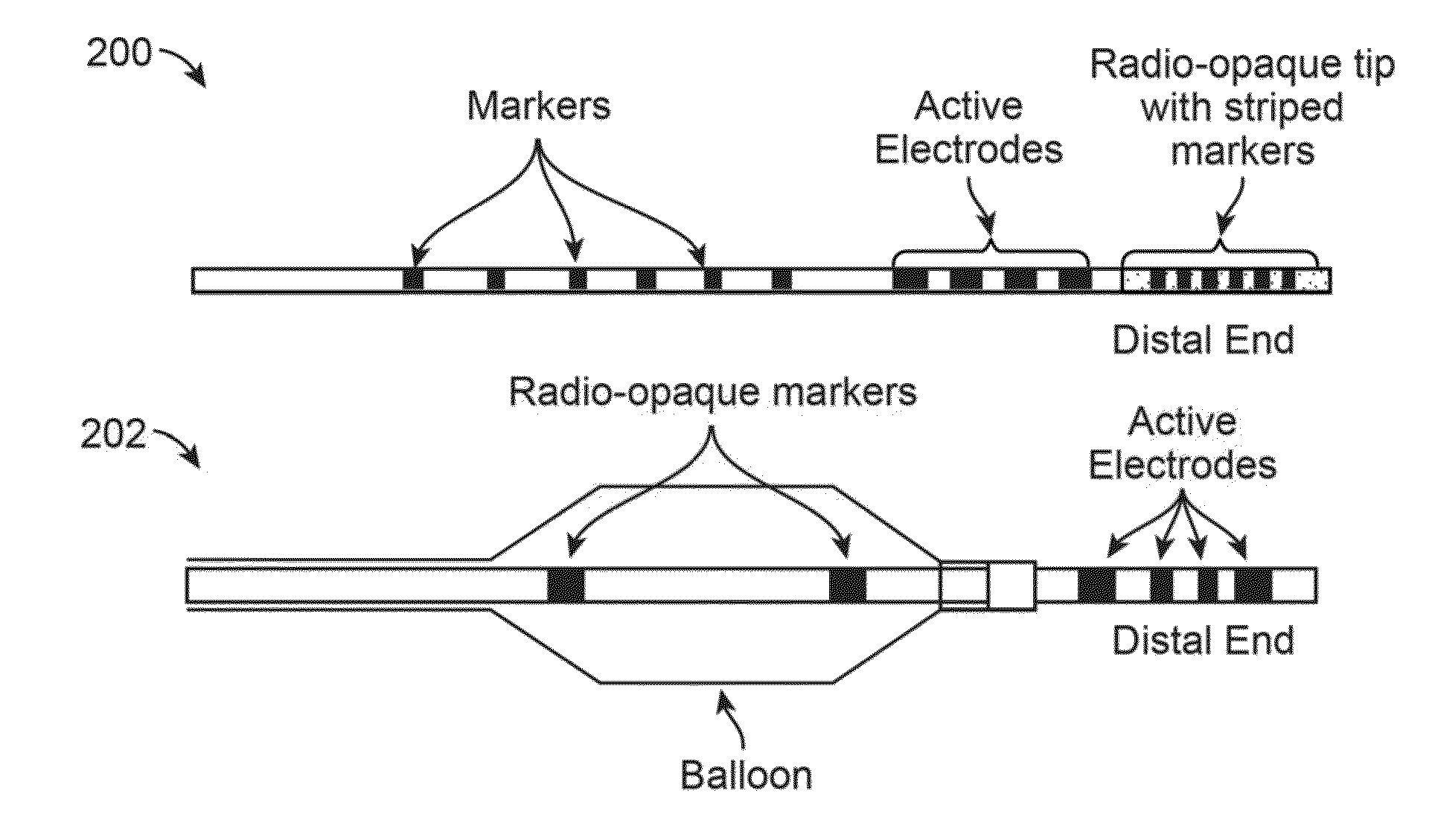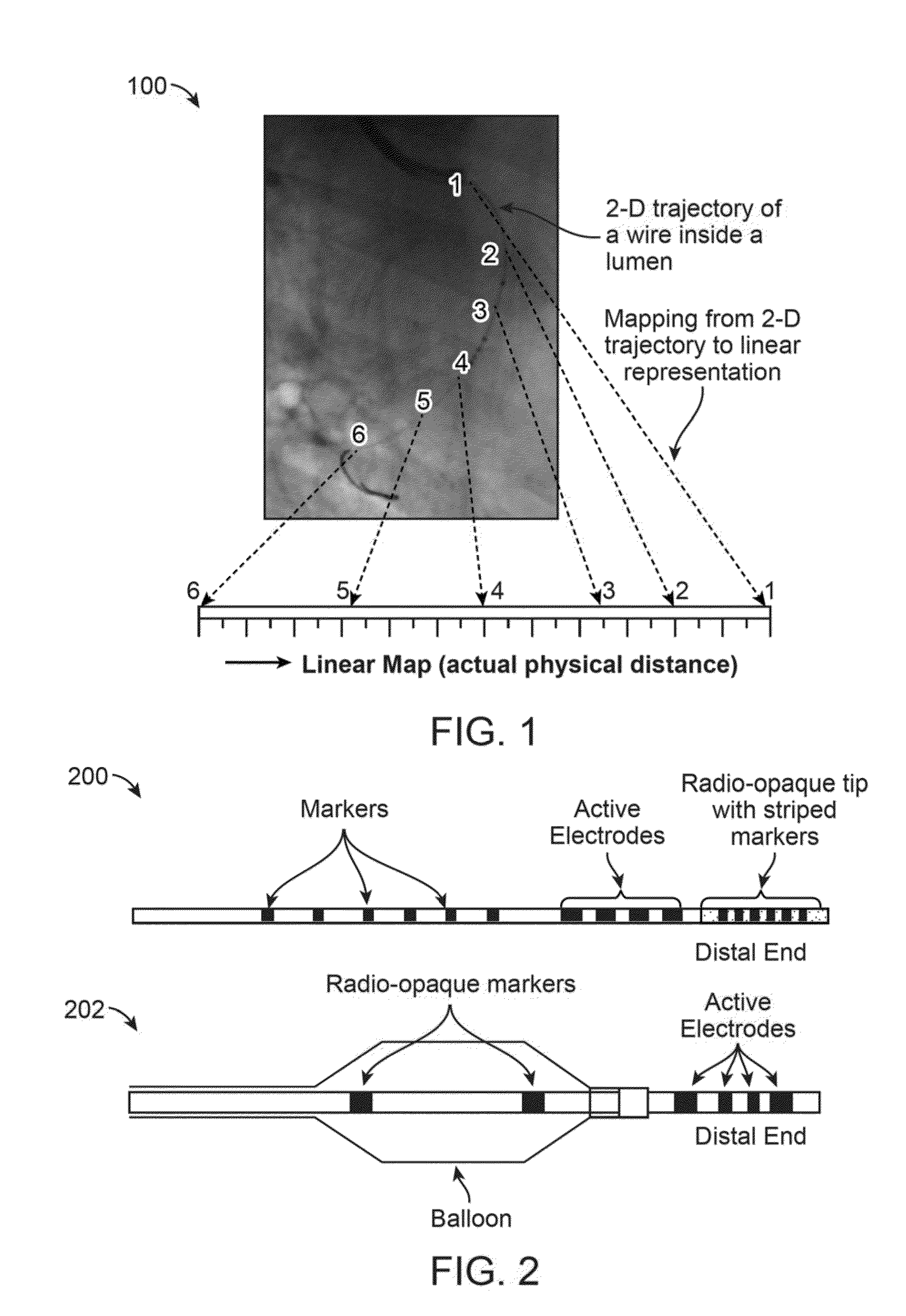Systems for linear mapping of lumens
a technology of linear mapping and lumens, applied in the direction of angiography, instruments, image enhancement, etc., can solve the problems of inability to accurately judge the actual length of the stent, the treatment is delivered without preserving position, and the existing mechanism to determine if the stent is positioned correctly
- Summary
- Abstract
- Description
- Claims
- Application Information
AI Technical Summary
Benefits of technology
Problems solved by technology
Method used
Image
Examples
Embodiment Construction
[0056]Here we describe methods to process the 2-D images to arrive at a linearized representation of a lumen of a moving organ. Illustrations of the proposed methods are shown for intervention of the coronary artery. A linear map is a mapping from a point on the curved trajectory of a lumen (or the wire inserted into the lumen) to actual linear distance measured from a reference point. This is shown in the schematic 100 in FIG. 1.
[0057]Note that in some sections of the blood vessel, the actual lumen trajectory in 3-D may be curving into the image (i.e. it subtends an angle to the viewing place). In these cases, an apparently small section of the lumen in the 2-D curved trajectory may map to a large length in the linear map. The linear map represents the actual physical distance traversed along the longitudinal axis of the lumen when an object traverses through the lumen.
[0058]The linear mapping method is applicable in a procedure using any one of the following endo-lumen instruments...
PUM
 Login to View More
Login to View More Abstract
Description
Claims
Application Information
 Login to View More
Login to View More - R&D
- Intellectual Property
- Life Sciences
- Materials
- Tech Scout
- Unparalleled Data Quality
- Higher Quality Content
- 60% Fewer Hallucinations
Browse by: Latest US Patents, China's latest patents, Technical Efficacy Thesaurus, Application Domain, Technology Topic, Popular Technical Reports.
© 2025 PatSnap. All rights reserved.Legal|Privacy policy|Modern Slavery Act Transparency Statement|Sitemap|About US| Contact US: help@patsnap.com



